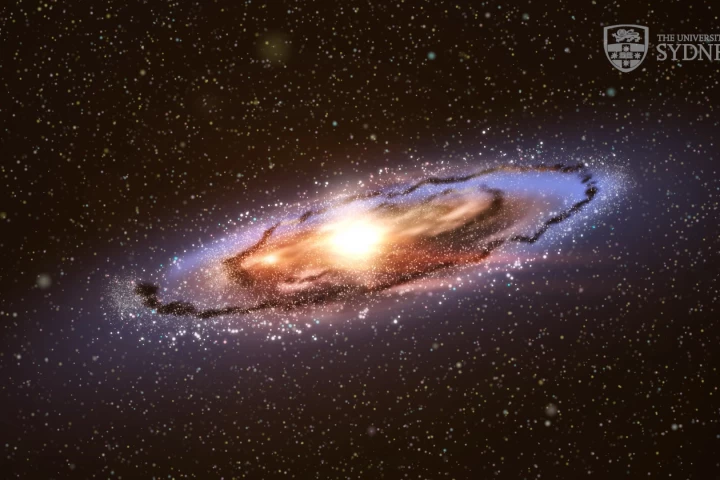Andromeda Galaxy
-
Astronomers have mapped out a huge invisible region of the galaxy next door. Hubble has detailed the size and structure of Andromeda's gas halo – and found that it’s already bumping up against that of the Milky Way, in advance of a cosmic collision.
-
A new study has revealed the violent past of the Andromeda galaxy, by identifying the remains of its galactic victims.
-
According to a new study, the Large Magellanic Cloud, a nearby dwarf galaxy, is on a collision course with the Milky Way. But there’s no need to worry just yet – the starry smashup won’t begin for another two billion years or so.
-
According to a newly-released paper, the Andromeda galaxy may have committed fratricide on a cosmic scale some 2 billion years ago, by ripping apart an enormous galaxy, and cannibalizing much of the body.
-
An international team of astronomers has now found evidence of a celestial smash-up between the Milky Way and an unknown dwarf galaxy that took place around eight to 10 billion years ago, and forever changed the face of our home galaxy.
-
Astronomers at the International Centre for Radio Astronomy Research (ICRAR) have calculated that the Andromeda galaxy is roughly the same size as the Milky Way.
-
The Hubble Space Telescope has done it again, capturing an incredibly detailed, macabre view of a dramatic galactic merger. This particular cosmic battle is set to be a pretty one-sided affair, as the majestic barred spiral galaxy NGC 1512 bears down on its victim – the dwarf galaxy NGC 1510.
-
NASA's Nuclear Spectroscopic Telescope Array (NuSTAR) observatory has discovered 40 previously unknown X-ray binaries in the nearby Andromeda galaxy (M31).
-
NASA's venerated Hubble Space Telescope has captured a striking image of the larger galaxy NGC 7714 colliding with its smaller companion NGC 7715. A similar cataclysmic collision is due to take place between our own galaxy and our closest neighbor the Andromeda galaxy in around four billion years.
-
NASA has released a stunning panoramic mosaic of our closest galactic neighbor, the Andromeda Galaxy. The image was captured by NASA's flagship Hubble Space Telescope, and features an impressive 100 million stars spanning 40,000 light years.
-
New analyses of the x-ray and gamma-ray emissions from the center of the Milky Way galaxy, the Andromeda galaxy, and the Perseus galaxy cluster have detected significant signs of two possible dark matter particles. One is likely a 7.1 keV sterile neutrino, and the other appears to be a 35 GeV WIMP.
-
To show off the capabilities of the new Hyper-Suprime Cam (HSC) on Mauna Kea, Hawaii, researchers have released high resolution images of the Andromeda galaxy that not only show off incredible detail, but may help shed light on the evolution of the Universe and the distribution of dark matter.
Load More











